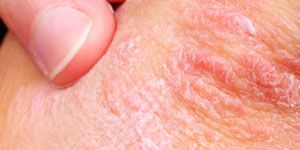Widespread Use of Personal Electronics Drives Increase in Nickel Allergies
With more people than ever using cell phones, tablets, and other personal technological devices, dermatologists have voiced concerns over the increase in cases of nickel allergies. Nickel, one of the most prevalent allergens in the United States, can be found within most handheld electronic devices and jewelry.

With more people than ever using cell phones, tablets, and other personal technological devices, dermatologists have voiced concerns over the increase in cases of nickel allergies. Nickel, one of the most prevalent allergens in the United States, can be found within most handheld electronic devices and jewelry.
“With the rising use of cell phones and other mobile devices, pediatricians can expect to see additional cases of ACD,” said Pediatric Allergy, Immunology, and Pulmonology editor-in-chief Mary Cataletto, MD, Professor of Clinical Pediatrics, State University of New York at Stony Brook.
According to the Centers for Disease Control and Prevention (CDC), 10 to 20% of the population is allergic to nickel. An article in the May edition of the Journal of the American Academy of Dermatology (AAD) noted a 40% increase in the number of patients who have tested positive for nickel allergies in the last 5 years.
Stephen P. Stone, MD, director of clinical research in dermatology at the Southern Illinois University School of Medicine and former president of the American Academy of Dermatology expressed, “I am absolutely concerned about this.”
While not overtly dangerous, itchy and uncomfortable nickel allergies are quite painful. An article in a recent issue of the Journal of Pediatrics examined the rise in nickel allergies among children.
Sharon Jacobs and Shehla Admani, dermatologists at Rady Children’s Hospital in San Diego, reported the first published case of a child with allergic contact dermatitis from an iPad.
The 11-year-old boy was hospitalized after a failed response to triamcinolone, his prescribed eczema treatment. The patch procedure tested positive for nickel exposure. His family did comment on his extensive use of the iPad, the back panel of which had also tested positive for nickel with dimethylglyoxime — a customary test for nickel containment. In an effort to prevent future outbreaks, he received a Smart Case for the iPad, producing positive results.
In February, the Consumer Product Safety Commission required Fitbit, creator of popular physical activity measurement devices, to recall more than a million of its Force wristbands after receiving over 1,000 complaints about skin irritation and blistering. James Park, CEO wrote users were most likely suffering from allergic contact dermatitis, a red and itchy rash, caused by either the adhesive or the nickel content.
“One of the scary things about a situation like this is that it induces a near state of panic when consumers have an adverse reaction and fear the worse,” said Joseph J. Siprut, a lawyer who filed a class-action complaint against Fitbit in March.
According to the Mayo Clinic, it's difficult to avoid nickel because it's present in so many products. Though nickel sensitization doesn’t develop easily since contact is typically brief, dermatologists continue to suggest barriers to prevent prolonged contact with nickel based products, like cases, bands, and zippers made from plastic or leather.